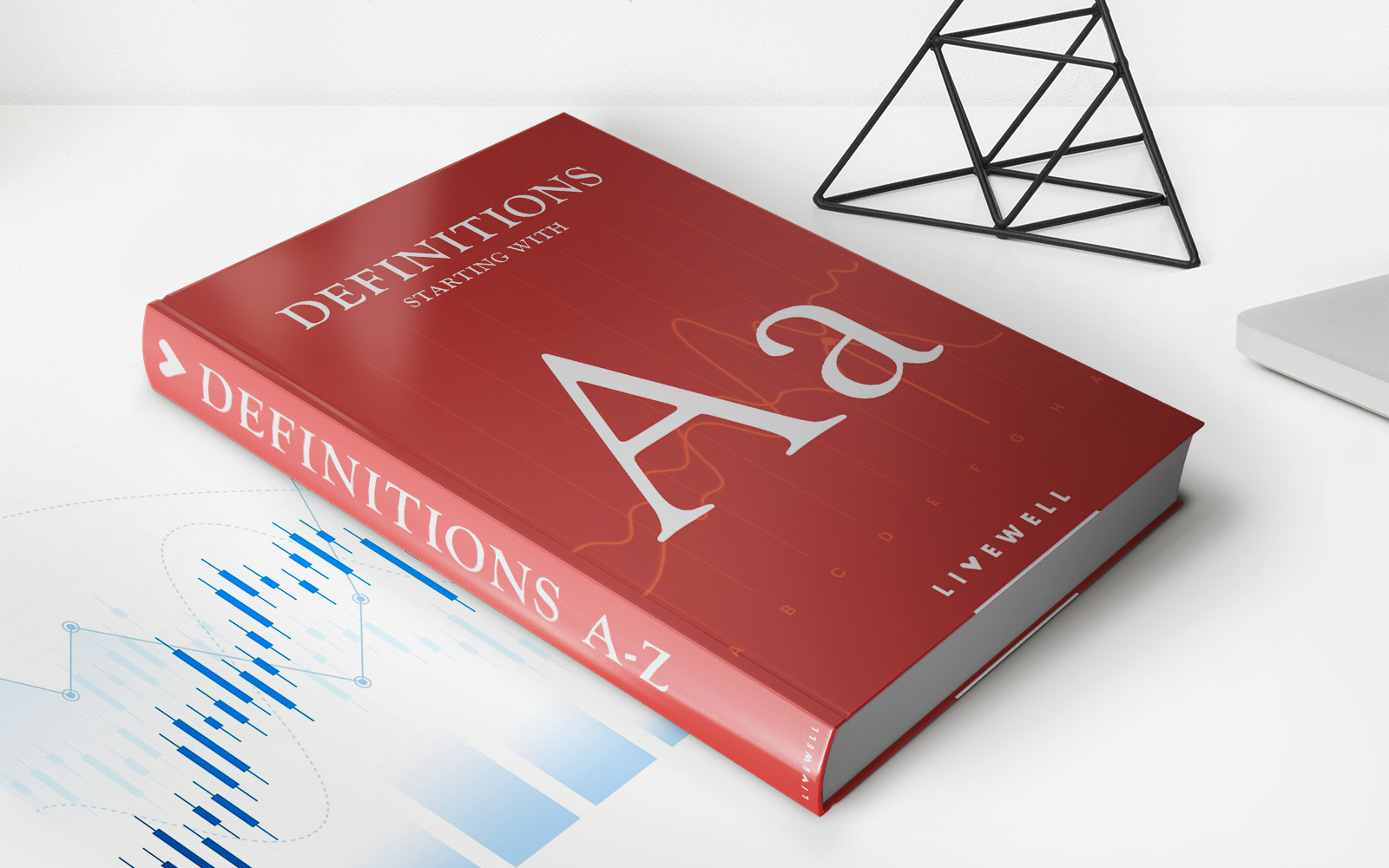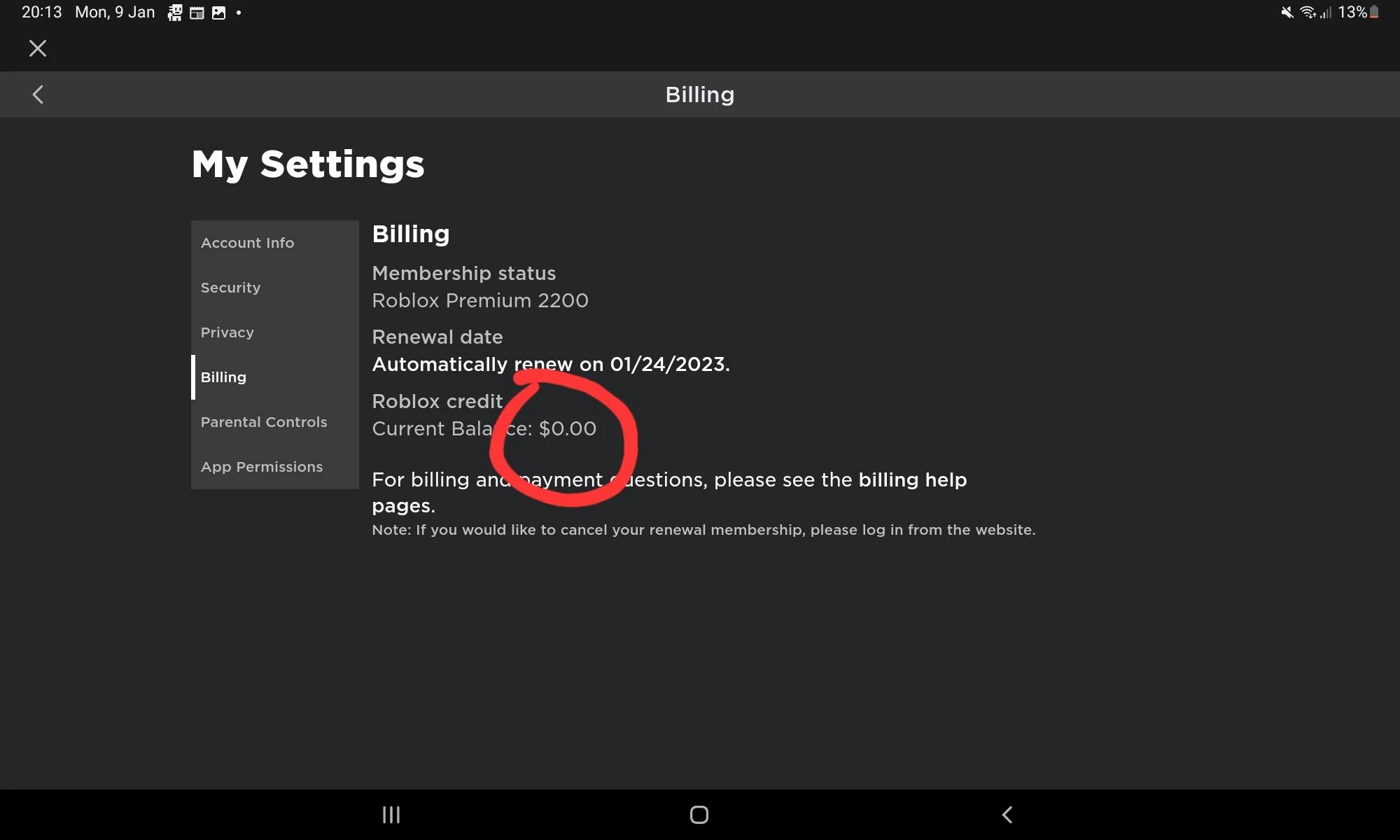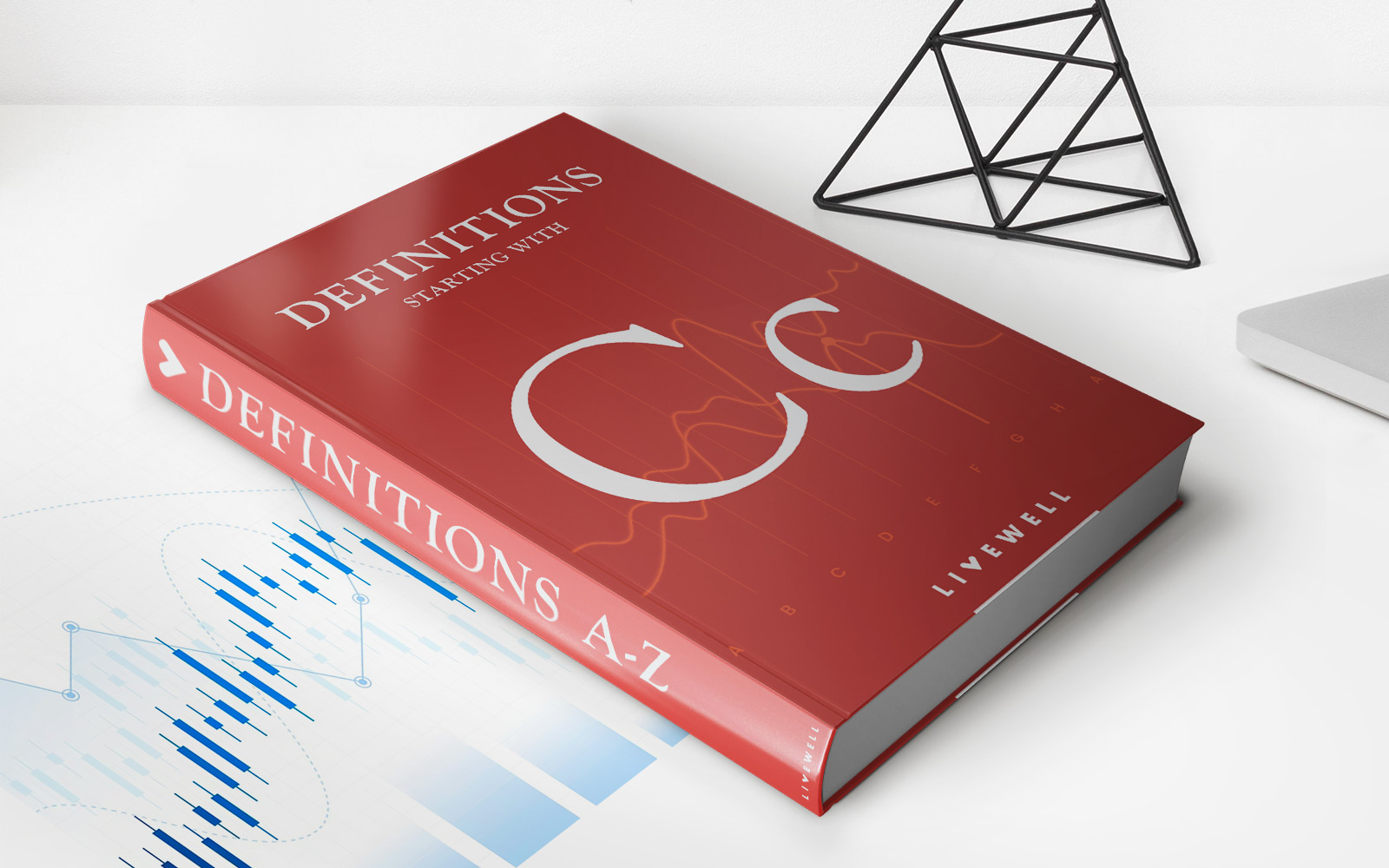

Finance
How To Use AMT Credit
Published: January 10, 2024
Learn how to effectively utilize the AMT credit to optimize your finances and maximize your savings. Discover expert tips and strategies for maximizing your financial benefits.
(Many of the links in this article redirect to a specific reviewed product. Your purchase of these products through affiliate links helps to generate commission for LiveWell, at no extra cost. Learn more)
Table of Contents
Introduction
Welcome to our guide on how to use AMT credit! The Alternative Minimum Tax (AMT) is a parallel tax system designed to ensure that high-income individuals and corporations pay a minimum amount of taxes, regardless of deductions and other tax benefits. However, the AMT can create a financial burden for many taxpayers, especially those with significant income and certain tax preferences.
Fortunately, the IRS has provided a way for taxpayers to offset the impact of the AMT through the use of AMT credits. The AMT credit allows you to reduce or eliminate the additional taxes owed under the alternative minimum tax system. Understanding how to utilize this credit effectively can make a substantial difference in your tax liability and overall financial position.
In this article, we will dive deep into the world of AMT credits. We’ll explain what they are, who is eligible for them, how to calculate them, and provide helpful tips for maximizing their benefits. By the end, you’ll have a comprehensive understanding of AMT credits and be better equipped to navigate the complexities of the tax system.
It’s important to note that AMT credits can be a complex topic, and it’s always a good idea to consult with a tax professional or financial advisor to ensure you make the most informed decisions based on your specific circumstances.
Understanding AMT Credit
Before diving into the details of how to use AMT credit, let’s first clarify what it is and how it works. The Alternative Minimum Tax (AMT) was implemented to prevent high-income taxpayers from utilizing various tax deductions and loopholes to significantly reduce their tax liability. Individuals and corporations subject to the AMT are required to calculate their tax liability twice: once under the regular tax system and once under the AMT system. The higher of the two tax liabilities must be paid.
The AMT credit is a mechanism provided by the IRS to help taxpayers offset the additional tax burden imposed by the alternative minimum tax system. It allows you to carry forward unused AMT credits from prior years and apply them against future tax liabilities, potentially reducing or eliminating the amount owed under the AMT.
AMT credits are generated when certain tax preferences, such as incentive stock options and tax-exempt interest on private activity bonds, are added back into taxable income for AMT purposes. These tax preferences are reduced or eliminated under the regular tax system, but the corresponding AMT credits allow you to recoup some of the tax paid under the AMT.
It’s important to understand that AMT credits are non-refundable. This means that they can only be used to offset your tax liability and cannot be converted into a cash refund. However, any unused AMT credits can be carried forward and applied against future tax liabilities, potentially providing tax relief in subsequent years.
Now that we have a basic understanding of AMT credits, let’s move on to explore who is eligible to claim them and how to calculate the amount of credit to which you may be entitled.
Eligibility for AMT Credit
To be eligible for AMT credit, you must have paid alternative minimum tax in a previous year. The AMT credit is designed to provide relief for taxpayers who were subject to the AMT in the past but are no longer subject to it in the current year.
Eligibility for AMT credit is determined by calculating your tentative minimum tax (TMT) for the current year. The TMT is the minimum amount of tax required under the alternative minimum tax system. If your regular tax liability for the current year is higher than the TMT, you are no longer subject to the AMT and may be eligible to claim AMT credits.
In order to claim the AMT credit, you must complete IRS Form 8801, which is used to calculate the amount of credit you are eligible for. The form requires you to provide information about your previous-year AMT liability and the amount of AMT paid. It also takes into account any previous-year AMT credits that were carried forward.
It’s important to note that certain types of income and deductions can impact your eligibility for AMT credit. For example, if you have significant passive income or tax preferences that are not added back for AMT purposes, you may still be subject to the AMT in the current year and may not be eligible to claim the credit.
Additionally, the eligibility rules for AMT credit can vary for individuals and corporations. Individuals may be able to claim the credit against their regular income tax liability, while corporations may be eligible to claim the credit against their alternative minimum tax liability. It’s crucial to consult with a tax professional or financial advisor to determine your specific eligibility for AMT credit based on your personal or business situation.
Now that we understand who is eligible for AMT credit, let’s move on to the next section, where we’ll explore how to calculate the amount of AMT credit you may be entitled to.
Calculating AMT Credit
Calculating the amount of AMT credit you are eligible for can be a complex process. It requires careful review of your previous-year AMT liability, any unused AMT credits carried forward from prior years, and the allowable credit limitations set by the IRS.
First, you need to determine your previous-year AMT liability. This can be found on your prior year’s tax return, specifically on Form 6251. Make sure to accurately input this amount when calculating your AMT credit.
Next, check if you have any unused AMT credits from prior years. If you have carried forward any credits, you can add them to your current year’s credits and potentially increase the amount of credit you can claim.
Now, it’s time to calculate your current year’s AMT credit. This can be done by completing IRS Form 8801. The form takes into account various factors, including your previous-year AMT liability, any unused AMT credits, and the allowable credit limitations.
The allowable credit limitations are important to consider, as they can impact the amount of credit you can claim. The AMT credit is generally limited to the amount by which your regular tax liability exceeds your AMT liability in the current year. However, some credits have specific limitations, such as the foreign tax credit and the general business credit. It’s crucial to review the IRS guidelines and consult with a tax professional or financial advisor to ensure you correctly calculate the allowable credit limitations.
Once you have completed Form 8801 and determined the amount of AMT credit you are eligible for, you can apply the credit to your current year’s tax liability. If the credit exceeds your tax liability, you can carry forward any remaining credit to future years.
Remember, calculating AMT credit can be a complex process, and it’s important to have a thorough understanding of the IRS guidelines and rules. It’s highly recommended to seek the assistance of a tax professional or financial advisor to ensure accuracy and maximize the benefits of the AMT credit.
Next, let’s explore how the AMT credit can be applied to offset your tax liability and provide you with potential tax savings.
Application of AMT Credit
Once you have calculated your AMT credit, you can apply it to offset your tax liability. The AMT credit can be used to reduce or eliminate the additional taxes owed under the alternative minimum tax system.
When filing your tax return, you will report your regular tax liability and any AMT liability for the current year. Then, you can apply your AMT credit to reduce your tax liability. If your AMT credit is greater than or equal to your tax liability, you will not owe any additional taxes under the AMT system.
If your AMT credit exceeds your tax liability, you may be able to carry forward the unused credit to future years. This can provide you with tax relief in future tax periods, as the unused credit can be applied against your tax liability in those years.
It’s important to note that the application of AMT credit may be subject to limitations and restrictions. For example, different treatment may apply to individuals versus corporations, and certain credits may have specific rules regarding their application. It’s advisable to consult with a tax professional or financial advisor to ensure you understand and comply with the applicable regulations.
Additionally, it’s important to keep thorough documentation and records of your AMT credit calculations and applications. This will ensure that you can accurately report and support the use of your AMT credit if you are ever subject to an IRS audit.
By effectively applying your AMT credit, you can significantly reduce your tax liability and potentially enjoy substantial tax savings. It’s a valuable tool for mitigating the impact of the alternative minimum tax and optimizing your overall tax strategy.
Now that we have explored the application of AMT credit, let’s move on to discuss some of the limitations and restrictions that you should be aware of when utilizing this credit.
Limitations and Restrictions of AMT Credit
While the AMT credit can be a valuable resource for offsetting the alternative minimum tax, there are several limitations and restrictions that you should be aware of. Understanding these limitations will help you make informed decisions and avoid potential pitfalls when utilizing the AMT credit.
Firstly, the AMT credit is non-refundable. This means that while it can be used to offset your tax liability, any excess credit cannot be refunded to you as cash. It is important to carefully calculate your AMT credit to avoid overestimating and relying on a potential cash refund.
Additionally, there are limitations on the amount of AMT credit that can be applied in a given year. The credit is generally limited to the excess of your regular tax liability over your AMT liability. However, specific credits, such as the foreign tax credit and the general business credit, may have further limitations on their application. It is important to review the IRS guidelines and consult with a tax professional to understand the specific limitations applicable to your situation.
Furthermore, the AMT credit cannot be used to offset your tax liability under the Net Investment Income Tax (NIIT) or the Additional Medicare Tax. These taxes are separate from the regular tax and the AMT, and the AMT credit cannot be applied against them.
It is also important to note that the AMT credit may have different rules and limitations for individuals versus corporations. The eligibility requirements, calculation methods, and application rules may vary depending on your tax status. Therefore, it is essential to consult with a tax professional who can guide you through the specific rules that apply to your situation.
Lastly, remember that the rules and regulations regarding the AMT credit can change over time. It is crucial to stay updated with the latest tax laws to ensure that you are aware of any changes that may impact your eligibility or the application of the credit.
By being aware of these limitations and restrictions, you can make informed decisions and effectively maximize the benefits of the AMT credit. Now, let’s explore how you can carry forward any unused AMT credit to future tax years.
Carrying Forward AMT Credit
One of the key benefits of the AMT credit is the ability to carry forward any unused credit to future tax years. This feature allows you to leverage the credit over time and potentially offset your tax liability in subsequent years.
When you have an AMT credit that exceeds your tax liability for the current year, you can carry forward the remaining credit to future years. The unused credit is not lost or forfeited, but rather becomes a valuable asset that can be applied to reduce your tax liability in the future.
To carry forward the AMT credit, you must accurately report the amount of unused credit on your tax return. This information is typically reported on IRS Form 8801. By properly documenting and reporting your unused credit, you ensure that it is properly accounted for and available for use in future years.
It’s important to note that the carryforward period for AMT credits is typically limited. For individuals, the general rule is that the credit can be carried forward for up to 20 years from the year it was generated. However, there may be certain limitations and exceptions that apply, depending on the specific circumstances.
When carrying forward AMT credits, it’s crucial to keep thorough documentation and records of the amounts and years in which the credits were generated. This documentation will support your tax returns and help you accurately apply the credits in future years.
By carrying forward unused AMT credits, you can potentially enjoy tax savings in the future and effectively utilize the credit over an extended period of time. However, it’s important to consult with a tax professional or financial advisor to ensure that you comply with the applicable regulations and maximize the benefits of carrying forward the credit.
Now that we have discussed how to carry forward unused AMT credits, let’s compare the AMT credit to regular tax credits and understand their differences.
AMT Credit vs Regular Tax Credits
While the AMT credit is a valuable tool for offsetting the alternative minimum tax, it’s important to differentiate it from regular tax credits. Regular tax credits, such as the Child Tax Credit or the Earned Income Tax Credit, are designed to directly reduce your overall tax liability under the regular tax system.
In contrast, the AMT credit is specifically aimed at offsetting the additional taxes owed under the alternative minimum tax system. It is calculated based on the difference between your regular tax liability and your AMT liability. The purpose of the AMT credit is to provide relief for taxpayers who were subject to the AMT in previous years but are no longer subject to it in the current year.
Unlike regular tax credits, the AMT credit has limitations and restrictions on its utilization. It cannot be used to offset other taxes such as the Net Investment Income Tax or the Additional Medicare Tax. Additionally, there may be limitations on the amount of AMT credit that can be applied in a given year, depending on the specific credits and the applicable regulations.
Regular tax credits, on the other hand, can often be claimed in full and can directly reduce your overall tax liability under the regular tax system. They can be refundable, meaning that if your tax liability is lower than the amount of the credit, you may be eligible for a cash refund of the excess credit.
It’s crucial to understand the distinctions between AMT credits and regular tax credits when planning your tax strategy. Depending on your individual circumstances, you may be eligible for various credits that can significantly reduce your overall tax liability. Consulting with a tax professional or financial advisor can help you navigate the complexities of these different credits and optimize your tax planning accordingly.
Now that we have explored the differences between AMT credits and regular tax credits, let’s conclude our guide with some tips for utilizing AMT credits efficiently.
Tips for Utilizing AMT Credit Efficiently
Utilizing AMT credit efficiently can help you maximize your tax savings and minimize your overall tax liability. Here are some tips to consider when strategizing the utilization of your AMT credits:
- Keep track of your AMT credit: It’s vital to keep thorough and accurate records of your AMT credit calculations, including the amount of credit carried forward from previous years. This documentation will help you maintain a clear understanding of your available credits and ensure you don’t overlook any unused credits.
- Plan your deductions: When utilizing AMT credit, consider the impact of your itemized deductions. Some deductions, such as state and local taxes or certain miscellaneous deductions, are not considered for AMT purposes and may affect your eligibility for the credit. Strategize your deductions to minimize their impact on your AMT liability and maximize your ability to claim the credit.
- Coordinate with other tax credits: If you are eligible for multiple tax credits, such as the Child Tax Credit or the Lifetime Learning Credit, coordinate their utilization with your AMT credits. Ensure that you understand the limitations and restrictions of each credit and plan accordingly to optimize your overall tax benefits.
- Consider carryforward benefits: If your current year’s tax liability is low or you expect higher income in future years, it may be advantageous to carry forward your unused AMT credits instead of using them immediately. By carrying forward the credits, you can potentially offset higher tax liabilities in the future and achieve greater overall tax savings.
- Seek professional guidance: The rules and regulations surrounding AMT credits can be complex, and their utilization requires careful consideration of your individual circumstances. Consulting with a tax professional or financial advisor who specializes in taxation can provide valuable insights and help you make informed decisions based on your specific situation.
By following these tips, you can effectively utilize your AMT credits and optimize your tax planning strategy. Remember, every taxpayer’s situation is unique, so it’s important to tailor your approach based on your individual circumstances and consult with a professional to ensure compliance with the applicable tax laws.
Now that we’ve covered our tips for utilizing AMT credit efficiently, let’s conclude our guide.
Conclusion
Understanding and effectively utilizing AMT credits can provide significant tax relief for individuals and corporations subject to the alternative minimum tax. The AMT credit allows you to offset the additional taxes owed under the AMT system, providing a means to reduce your overall tax liability and potentially achieve substantial tax savings.
In this comprehensive guide, we have covered the key aspects of AMT credits, including their purpose, eligibility criteria, calculation methods, application, limitations, and strategic tips. We highlighted the importance of accurate record-keeping, careful planning of deductions, coordination with other tax credits, consideration of carryforward benefits, and seeking professional guidance to optimize the utilization of AMT credits.
While the complexities of the tax system can be overwhelming, being knowledgeable about AMT credits can empower you to make informed decisions and leverage the available tax benefits. Remember, tax laws are subject to change, and it’s essential to stay updated with the latest regulations and consult with a tax professional or financial advisor to ensure compliance and maximize your tax savings.
By effectively utilizing AMT credits and leveraging other tax planning strategies, you can minimize your tax liability and keep more of your hard-earned money. So take the time to understand the intricacies of AMT credits and make the most of this valuable tool in your financial journey.
Disclaimer: This article provides general information only and should not be construed as tax advice. Each individual or entity’s tax situation is unique. It is strongly recommended to consult with a tax professional or financial advisor for personalized advice based on your specific circumstances.














